

Santa Caterina (1745-9)
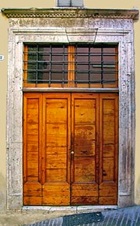
Bishop Giacomo Filippo Consoli laid the foundation stone of the new church in 1745, and consecrated it in 1749, as recorded in the inscription above the portal.
The nunnery was suppressed in the Napoleonic period and again in 1860. In 1920, a female community of Franciscan tertiaries opened an orphanage here. This closed in 1977, when the ex-nunnery was adapted as apartments. The church was restored at that point and used to house the Episcopal archives. It has since been closed.
San Girolamo (17th century)
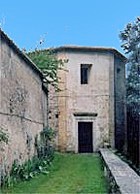
Crucifixion with the Virgin and St Jerome (16th century)
This altarpiece, which is set against a cityscape of Amelia, is attributed to Litardo Piccioli.
Santa Lucia (1956)

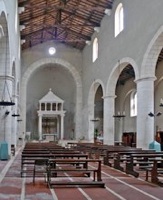
This church was built on the site of the church and Franciscan nunnery of Sant’ Elisabetta, which was destroyed in 1944.
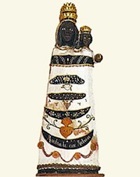
Madonna Addolorata Madonna di Loreto
The church contains two venerated Marian images:
-
✴the Madonna Addolorata (Our Lady of Sorrows), to the right of the high altar, which was donated by a lady called Elena Gentilucci; and
-
✴a polychrome wooden statue of the Madonna di Loreto (a black Madonna and Child) on the counter-façade, which came from the church of Sant’ Angelo.
Santa Maria di Porta (17th century)
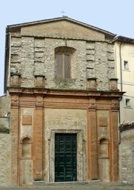
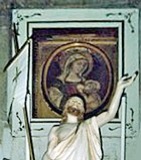
This church, which is also known as la Madonnina, preserves a venerated fresco of the Madonna del Latte (15th century), which was originally on [which city gate?]. It belonged to the Confraternita di SS Giovanni e Paolo, which was formed before 1661.
Santo Stefano (13th century)
In 1256, Bishop Gualtiero granted the Benedictine Rule on a community of women who lived in what is now Via dell’ Ospedale. In return, they accepted his jurisdiction, and agreed to donate a pound of wax annually on the feast of Santa Firmina.
In 1399, at the behest of Pope Boniface IX, the Monastero di San Magno merged with the Monastero di Santa Maria da Canale, a nunnery outside Amelia that also belonged to Abbazia di San Paolo fuori le Mura. In 1428, Bishop Filippo Ventorelli arranged for almost all of the nuns to be concentrated at San Magno. However, some chose instead to move to the Monastero di Santo Stefano.
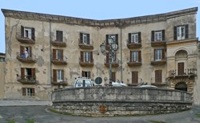
Bishop Tommaso Struzzieri suppressed the nunnery in 1772, and moved the Ospedale di Santa Maria dei Laici here from Via della Repubblica. The present building on the site still serves this purpose.

